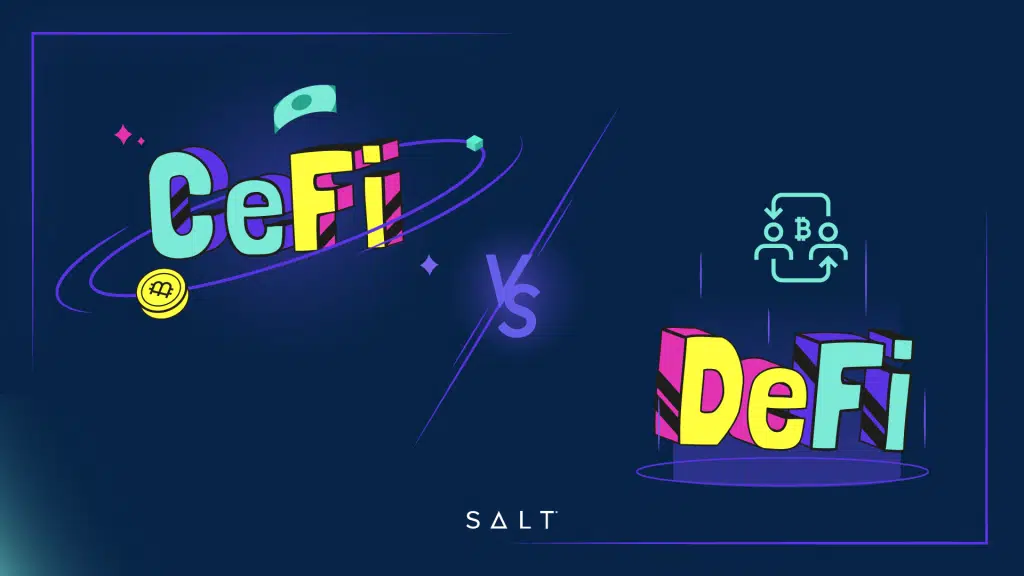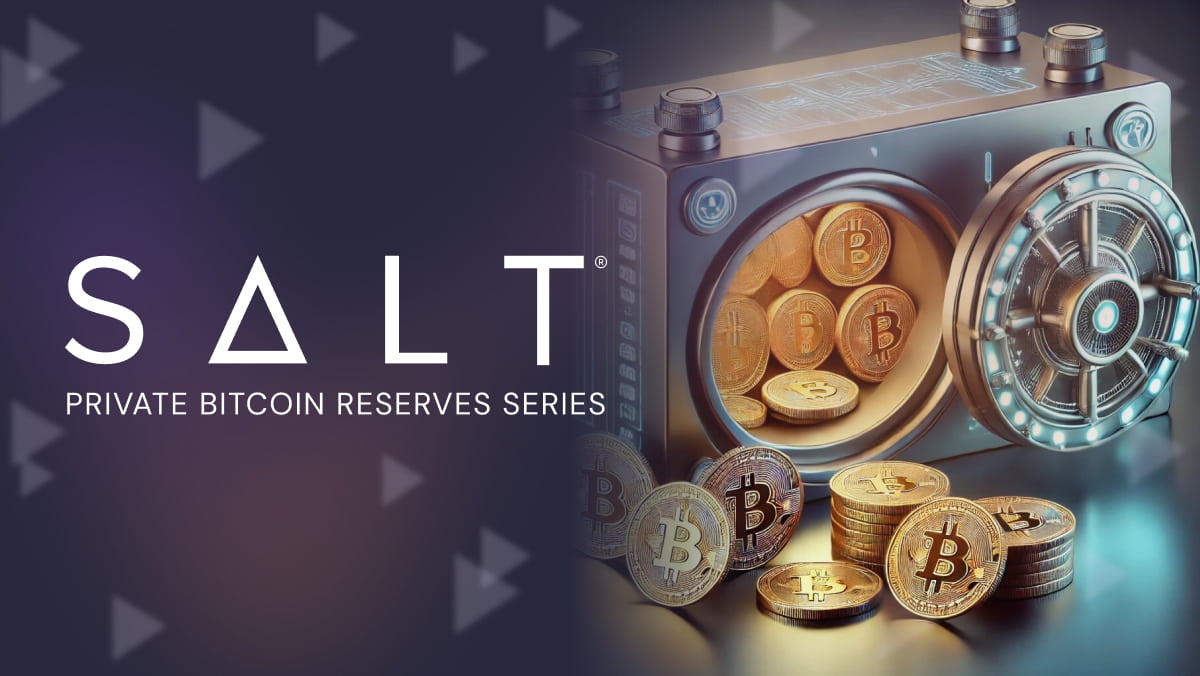With an ever-expanding asset class known as “cryptocurrency,” there are always new terms popping up and it’s easy to get lost among the crypto jargon. One of the larger points of discussion over the past year has been around platforms for crypto-backed lending — particularly around DeFi and CeFi. What do these terms mean and what’s the difference between them?
CeFi stands for centralized finance. Companies that fall into this category include SALT, Coinbase, and Kraken, whereas DeFi, which stands for decentralized finance, includes protocols like AAVE, Compound, and Anchor. The main difference between these two platform types is the degree of centralization for the decision makers of the financial services platform a user can engage with. CeFi platforms are typically governed by corporate entities that can create their own lending requirements such as deposit minimums, the KYC (Know Your Customer) requirements, and how the profits of the platform will be handled subject to rules and regulations where the company is domiciled and may be subject to reporting requirements. With DeFi, the goal is to move toward decentralization where the community will be the body that governs the DAO – creating the rules, which may include decisions around how to pay developers, interest rate methodologies to price loans, fees and rewards for providing liquidity to pools, etc. By holding the governance tokens of the Defi platform, you will typically be granted voting rights, able to propose changes to the protocol, and permitted to participate in making decisions regarding the future growth of the platform (partnership, etc. In theory, eliminating the principal-agent issue in financial services firms should provide a more streamlined offering with optimal resource allocation.
Having laid out the clear differences between CeFi and DeFi, you can see there are pros and cons to each. On one end, CeFi helps to onboard the masses, as it is generally more user-friendly and more widely trusted given it tends to mirror the security and look and feel of traditional financial products. Most importantly, CeFi companies are “centralized entities” with officers and board members associated with government registered entities rather than a smokescreen of anonymous individuals that can be anywhere in the world. Additionally, CeFi offers customer support with live agents versus asking a community of individuals that may not be trained or knowledgeable about the product offering. With SALT for example, if you’re a loan holder who clearly attempted to make a deposit to cure the health of your loan during a market crash and had trouble getting the transaction to go through due to high transaction volume, we try our best to work with you to make it right. With DeFi platforms however, this is not the case, as the platform only functions according to the underlying smart contract and user are required to interact with the protocol using browser wallets that require a certain degree of technical knowledge. Finally, the security risk embedded in smart contracts creates reluctance among institutional investors; constantly defending against the numerous attack vectors are difficult for the average person to keep up with.
So how do you choose between DeFi and CeFi? Technically you don’t have to. Are you a tech savvy crypto user who likes security and ease-of-use, but is also willing to take on a bit more risk for greater flexibility? Or maybe you like being in the know about the inner workings of the various companies that make up the crypto industry and want to be well-versed in both platforms? If you answered yes to either of these questions, consider familiarizing yourself with both platform types and experiment (within reason) with what each platform type will allow you to do. If you’re someone who relies on crypto for its reputation of anonymity, the governmental interference in the CeFi world will likely taint your view of CeFi platforms, which means you may be better suited to DeFi. For those who value customer service and get prickly when they think about a company being run by an anonymous community, CeFi is likely the better choice for you.
Whether you tend to side more with DeFi or CeFi, there’s no denying that CeFi is the best and only way to bridge to DeFi in the sense that you’ll likely need to use a CeFi platform to onramp and off ramp into DeFi . Perhaps this will change in the future and there will be easier ways to bypass CeFi and jump straight into DeFi or perhaps governments, by having control over CeFi platforms will always maintain some level of control over DeFi platforms, too. This then begs the question: how decentralized is decentralized finance?
If you want to explore CeFi and are considering getting a loan backed by your bitcoin, ether, or another cryptocurrency, visit saltlending.com or click the button below to create an account.








